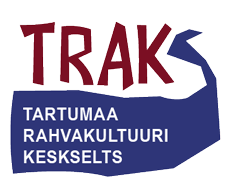Oi miun ehtoiza emmoini
(My Mother and Stepmother)
Maarja Oras and choir
In Ingrian
Oi miun ehtoiza emmoini,
ehtoiza ehittäjääni,
ku kuuli pühän tullovan,
ajoin kallihin astuuvan,
tegi puizella porrooa,
avaroilla astialla,
pezi pääni valgiaksi,
itseni imelähäksi,*
andoi paijan aivinaisen,
vööhö asse vergoittelle,
vööhö asse vergoittelle,
maaha asse margoittelle,
päälle paijan palttinaizen,
kaikki kultien keralla,
punavööhö vöödütteli,
sinipaglaha rivoitti.
Laski kultana kujalle,
vaskuena vainiolle,
kujan suida kukkumaaha,
heinän päidä heeromaaha,
heinän päidä heeromaaha,
kassetta karistammaaha.
Nii küssüit külläiset naiset:
“Kenen kultoin on kujalla,
kenen vaski vainiolla
kujan suida kukkumassa,
kassetta karistammassa,
vainioja valvomassa.”
Miun emmoin (vaa) vastaeli:
“Miun on kultoini kujalla,
miun on kultoini kujalla,
miun on vaski vainiolla.”
Niin tuntuu emodoin tyttöi,
tuntuu lapsi laatiimadon:
ku tulloo pühhäine päivä,
paras päivä praaznikkaine,
i on päähyt pezömädä,
tappurain on paidoi päällä,
segoista sinikke päällä,
heinäraippaiset jalassa.
Nii vaa laatii veeras nainen
veerahia lapsuizia.
In English
My dear mother,
My lovely, who adorned me,
When she heard the holidays coming,
Precious seasons approaching,
She made soap in a wooden barrel,
A wide vessel,
Washed my head white,
Myself sweet,
Gave me a linen shirt,
Adorned to the waist,
Adorned to the waist,
Fixed up to the toes,
Pulled a linen shirt on top,
With all kinds of gold,
Put a red belt on,
Wrapped legs in blue ribbons.
Sent me, golden one, to the village lane,
Me, copper one, to the pasture,
To walk and sing on the village lane,
To rub heads of grain,
To rub heads of grain,
Shake dewdrops.
The village women asked:
“Whose is that golden one on the lane,
Whose is that copper one in the pasture,
Singing on the village lane,
Shaking dewdrops,
Guarding the pastures?”
My mother replied:
“It’s my golden one on the village lane,
My golden one on the village lane,
My copper one in the pasture.”
You know a motherless child,
You see a child without care:
If on the day of feast,
On the best feast day
[Her] hair is unwashed,
Her shirt is of coarse tow cloth,
Her jumper dress jumbled,**
Her shoes made of hay.
This is how a woman
Dresses children who are not hers.
Own mother takes good care of her daughter and adornes her daughter nicely when holidays are approaching. She is proud as the villagers admire her daughter, walking in a ritual procession among others and singing. The daughter of a stepmother is always wearing plain clothes and is unadorned.
The topic of orphanhood is very common in Ingrian songs of sorrow. The Finnish researcher Senni Timonen argues that in these songs being an orphan is not always to be taken literally—it rather conveys an existential meaning. In the lyrical language, poetic devices are used to express the existential solitude of being human in the world.
The song about own mother and stepmother was sung in a variety of performance situations, when young women came together, on feast days and at weddings. The melodies and movement could vary. While it is known that the song has been sung to a different melody and has been performed, among other things, an active circle dance, a more common way to perform such contemplative songs is with calm and slow movements and singing while standing up or sitting down.
T M Katoi Vüdre tütar, 18 a, Viistina (Armas Launis 1906, SKSÄ A 300/49a, ph 42a).
T Uljaana Ruutsiasta, Savimägi (Volmari Porkka 1881–1883, SKVR III2 1501).





